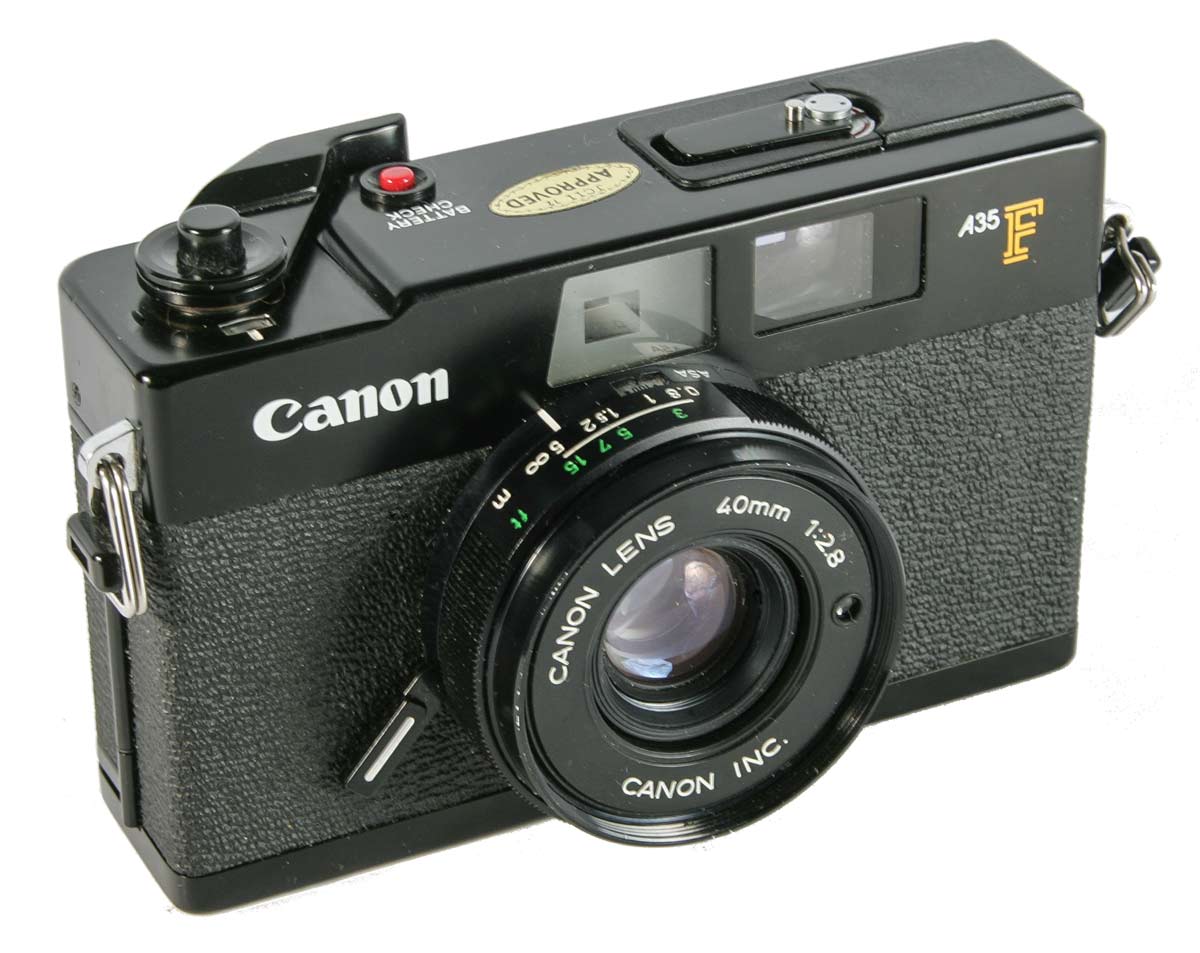The A35 F, like the other Canonets, is a solid little camera. All black and shiny, around your neck it is real photographic “Jewellery”.
When I write about a camera I live with it for a few days. I only write about one that I have, so the first thing I do is get it off the shelf, clean it up real good, I read the manual, I load the batteries and check to see if it functions, and I get to know it. I recently wrote about the A35 F and as I got to know this camera I was impressed. It is a neat little device and I knew I wanted to actually try it out.
So, the other day, I got out a Canon shoulder strap and loaded a 15 exposure roll of Ilford HP5 (ISO 400). Once loaded and shouldered I was ready for my shoot. I took a few pictures around the yard here at home and then on my way home from work I stopped in Queen Elizabeth park in Vancouver and finished the roll. 15 pictures don’t last very long, especially if you are used to shooting digital.
This camera is easy to use! All you do is set the ISO, wind the film and push the button. The viewfinder is bright and the picture is framed with a clear yellow line. You can see the meter needle on the right edge of the frame reading out the f/stop but there is nothing you can do about it. The only real function for the needle is to indicate battery status. You have no control over shutter speed or f/stop.
In Queen Elizabeth Park I found this California Poppy under a gnarly old tree and it appealed to me. I can’t say why one scene touches me and another does not. That decision just happens. That’s all.
I have to admit I was in a hurry. I wanted to see how this camera would perform and so I used a short roll and I did not really seek out great photo opportunities.
I developed the film in my kitchen as I usually do and being in a hurry used my flatbed scanner. When I finally got to examine my dozen images I was pleasantly surprised. The frames were all properly exposed and In those few negatives I had a couple of decent images.
One problem I had was a light leak somewhere in the process. The film was fogged on one edge of almost every frame in exactly the same place. This leads me to the conclusion that the camera is suffering from a light seal problem. If I’m going to shoot this camera again I will have to redo the seals.
In the Park there’s a lily pond surrounded by rushes and trees. It’s a lovely spot with ducks, geese and lily pads. And it is a place one can find lovely pictures without too much difficulty.
The lens is a simple prime of 40mm with 5 elements in four groups. And yet it has the ability to take excellent images. Remember that this camera is intended for amateurs who want pictures of families and vacations, who don’t want to fiddle with exposure or focusing, and who only want to see color slides or 4×5 prints. This camera was designed for them.
And yet, look at the images. Wow! Canon continually impresses me with their cameras. I have never been unhappy with my decision to use their equipment.
This image is square because the right edge of the frame was fogged by my light leak. But it seems to work like this.
I come back to an old theme I am always bringing up: the art is not in the camera. A better camera will not produce better pictures. They might be easier to create, they might be sharper, but the camera will not produce a better picture. A better camera might simplify the process, but the image is still dependent on the vision of the person behind the camera.
There is so much more to photography than pressing the shutter button. There is a whole craft behind what is a deceptively simple process.
So now I intend to fix the light seals, load a 36 exposure roll and spend a whole day with this camera. But that will have to wait till I have spent a day with my current love: a gorgeous black AE-1.






